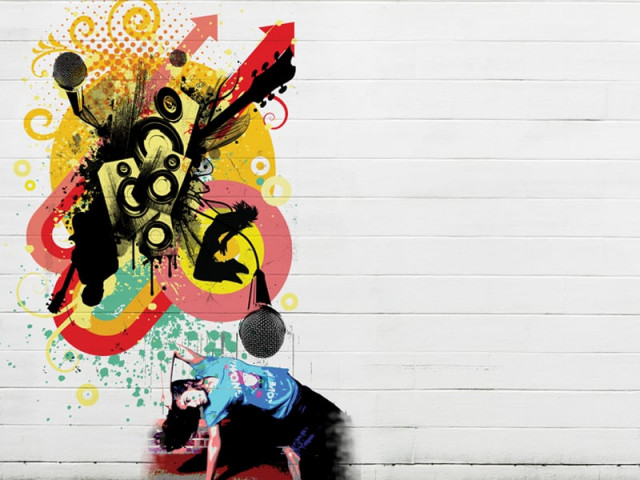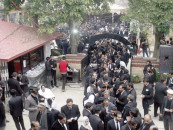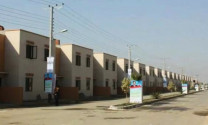Street smart
What happens when ghetto art finds a following among Pakistani youth?

Street smart
Nope, it’s not the Difa-e-Pakistan Council rally or the latest addition to the ever-growing list of proscribed-but-nonetheless-active terror groups.
It’s Hip-Hop, and it’s found a home right here in the Land of the Pure.
For this global cultural phenomenon, it’s been a journey that began in the 1970s. Just like rock ‘n’ roll burst onto the scene after World War two, this uniquely urban youth culture exploded onto the streets of New York’s Bronx area in the aftermath of the Vietnam War and the civil rights movement.
While a lot of figures can be credited with having a huge influence on hip-hop, the one man who can be called the ‘founder’ of this phenomenon is Afrika Bambaataa, a reformed gang leader and founder of the Universal Zulu Nation. Babaataa laid down the four ‘pillars’ of hip-hop (emceeing/rapping, break dancing, DJing and graffiti) in an effort to draw local youth away from gang violence. It wasn’t just a new form of music, it was a lifestyle.
Over the past 40 years, hip-hop’s gone truly global and, as is inevitable, has seen more than a few changes along the way. The rise of ‘gangsta rap,’ and the tendency of latter-day rappers to keep ‘their mind on their money and their money on their mind’ may seem to have turned what was a countercultural revolution into the new status quo.
Still, there are many who are keeping the torch lit, and in Pakistan at least, hip-hop isn’t all about guns, bitches and bling. At least not yet.
Adil Omar is an Islamabad-based rapper who started writing music at the age of nine. His lyrics are a far cry from the largely materialistic outlook that seems to have dominated global hip-hop, or the often soppy sentiments that pop up in just about every other local track.
“I make a terrorist tear a wrist, prepare for his funeral and I’m way beyond your government’s or parent’s approval.” This line from his track ‘Paki Rambo’ gives a pretty good idea of where his lyrical inclinations lie.
The controversial title was taken from a line in the British black comedy, Four Lions, which is based on four would-be suicide bombers and their farcical attempts to stage a terror attack.
While Omar certainly doesn’t shrink from pushing boundaries with his provocative lyrics, he himself describes his music as “therapy.”
“I’m not trying to get a message across,” he says. “My music is just my expression and my own therapy. I’ve always just wanted to do music and will probably branch out into other genres and evolve as I go along but in terms of writing, hip-hop is what I connected with most and that’s just how I started.”
Influenced by musicians as diverse as Trent Reznor, Johnny Cash and Dr. Dre, Adil has got hip-hop bona fides that even the biggest names in rap can envy. He got his first big break in 2008, when legendary rapper B-Real from Cypress Hill picked him to collaborate on his album ‘The Harvest.’
Three years on, Adil has worked with some of the most respected names in hip-hop. His track ‘Off the Handle’ featured another renowned American rapper, Xzibit. He’s also had his share of the limelight at home and was nominated in the Best Emerging Talent category of this year’s Lux Style Awards.
Pakistani youth culture has seen a huge change in recent years. More young people are inquisitive about and are exposed to different genres of music and art, largely thanks to social networking sites. While there are always those who liken the preservation of old-school tradition with the exclusion of anything new and provocative, this particular genie won’t go back into the bottle quite so easily.
“Most people in general are obviously ignorant and narrow-minded when it comes to hip-hop here,” says Omar. “I’ve had bad reactions to my music but it doesn’t compare to the love and support I’ve gotten. I tend to look at the positive aspects of it.”
Both the ignorance and tolerance Omar talks about were on display when Punjab MPA Seemal Kamran wanted to ban hip-hop and other ‘objectionable’ concerts in the wake of a deadly stampede at a concert in Lahore’s Alhamra auditorium. Reported in some sections of the media as a ‘hip-hop’ ban, it was quickly rejected by the Punjab assembly, which was of the view that such bans would only promote intolerance.
For his part, Adil doesn’t associate his music with any political or religious agenda — he just wants to rap: “I’m nothing more than an entertainer and a human being who just enjoys writing and making music. If my work inspires people to challenge authority and think more as individuals, then good for them!”
But it’s not just the rapping aspect of hip-hop that’s found a home in Pakistan. More and more guys (and at least one girl) are also busting moves as break dancing becomes increasingly popular thanks to the popularity of talent shows and music videos featuring street and break dancing.
Seventeen-year-old Karachiite, Ifrah Humayun, has been break dancing for over a year now, and may well be one of Pakistan’s first straight up ‘bgirls.’
Combining loud colours and her Converse shoes, Ifrah’s open attitude and hip-hop style complement her image and dancing. She cites graffiti and fashion as two of the main inspirations which led her to learn to break dance.
“When people find out I’m a bgirl, their first reaction is shock,” she says. “They’re like: ‘What? A girl is going to break dance?’ But when I start up, they get surprised that girls in Pakistan have some talent.”
Although Ifrah’s family is mildly conservative, she has the freedom to train and participate in break dancing competitions in Karachi’s ActOne Studios.
Talking about hair and makeup with friends is the least of Ifrah’s priorities. Instead, she competes with her best friend in break dancing battles which, she says, helps her improve her moves.
“The opportunities in Karachi aren’t so good when it comes to hip-hop and we girls don’t get as much recognition,” Ifrah complains. “But I use hip-hop to express myself. I love it and it is my passion.”
Communicating with fellow bgirls/boys has simplified for Ifrah with Facebook and YouTube. But despite her confidence, the idea of a girl break dancing is not favoured or accepted culturally. In Pakistani society, it’s something girls just don’t do. This frustrates Ifrah.
“The problem is that in Pakistan 40 per cent of people are illiterate,” she says. “My point is that people don’t have any knowledge about it. It’s really difficult to make people understand that it’s not a sin to be a bgirl. It’s a free act like doing yoga or aerobics, but the only difference is that I pick up the tune and dance.”
Despite the lack of support, Ifrah intends to defy these cultural taboos by persisting with her passion for hip-hop.
“Break dancing is something I can’t stay away from. When I watched the film Step Up for the first time, it got me thinking ‘why not me?’ I can dance too and this is something I want to do.”
While Ifrah is content with perfecting her breaking skills, for bboy and graffiti artist Abdullah Ahmed Khan, better known as Sanki King, the world is, quite literally, his canvas.
“What inspired me to do graffiti was its uniqueness and freshness,” Sanki says. “Before knowing about graffiti, I never thought you could do so many things with letters and make them look so outstanding and that you could do it anywhere, on fabrics, on walls.”
The fine arts student discovered bboying and graffiti when he was 13 and what started out as a fascination ended up being a daily obsession.
“Ever since I’ve learnt about the four elements and the connection between graffiti and hip-hop, it’s more like a lifestyle to me,” he says with conviction. “To me, break dancing, drawing graffiti or listening to rap and DJs is the same as eating lunch, dinner and brushing my teeth every day!”
Sanki believes that break dancing and hip-hop are positive ways to vent out frustration and anger — feelings many young people are all too familiar with.
“I look at the four elements as an escape — a way out. The majority of young people in Pakistan don’t have access to many facilities,” Sanki says. “We have countless problems in our country and all that energy needs to be taken out. As Pakistanis, we have gone through a lot and when we express it through art and music, what comes out is incredible.”
The 21-year-old just painted his first outdoor wall this year followed by a canvas for the Karachi International Food & Culture Festival.
“When I got introduced to graffiti, I literally got crazy,” he says. “I used to sketch almost all the time and watch graffiti videos in any spare second I had.”
While some graffiti artists are moving towards socio-political and cultural themes, Sanki prefers to use the bright and bold bubble letters and sharp edges, relating back to the original styles of graffiti. His break dancing has also become a paid-off skill as he is now one of the best bboys in the country.
“In my eyes, bboying is a mixture of style, technique and power,” he says. “It’s influenced by martial arts, gymnastics and capoeira. I would never have the confidence to do Bollywood dance or bhangra in front of a crowd but I would break dance anywhere.”
Sanki acknowledges that the hip-hop movement in Pakistan is still in its infancy but thinks the future is bright. Recently, he’s even taken his graffiti skills to another level by custom painting sneakers and then selling them via his Facebook page.
“You don’t need anything flashy or expensive to learn bboying, graffiti, rapping or DJing,” he says. “No matter how rich or poor a person is they can be a hip-hopper whenever they want. That’s the beauty of it. There is so much goodness in hip-hop that if a person gets into it, they will be hooked for the rest of their lives.”
Hip-hop gave a voice to young people in the South Bronx back in the 1970s, and now more and more Pakistanis are adding their own desi tones to the global chorus. And as Pakistani youth find a vent for their frustrations in an art form that increasingly resonates with local conditions, appreciation for hip-hop is likely to grow.
Published in The Express Tribune, Sunday Magazine, July 22nd, 2012.


















COMMENTS
Comments are moderated and generally will be posted if they are on-topic and not abusive.
For more information, please see our Comments FAQ